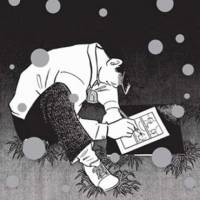Readers tired with the glut of violence, wonderment and sentimentality that defines manga fantasies centering on characters with extraordinary powers and cute, eroticized females will find the unsparing social realism of Yoshihiro Tatsumi's autobiographical "A Drifting Life" a breath of fresh air.
A Drifting Life, by Yoshihiro Tatsumi, Translated by Taro Nettleton.
Drawn & Quarterly Publications, Manga.
An immensely important visual artist and a pioneer of alternative manga, Tatsumi has never received the acclaim in his own country that he deserves. His uncompromising portrayal of Japan in the decades after the war highlights the existence of people living on the margins of growth and prosperity. This gritty look at the lower depths experienced by ordinary people is also an incisive self-critique of the author's own life and an inquiry into the meaning of being an artist.
The narrative begins at the end of the war, with Emperor Hirohito's surrender speech on the radio, after which, Tatsumi dryly observes, "Japanese citizens were finally liberated from a life of daily suffering." The historical sweep continues through the deprivations of the 1950s, student riots in the '60s and the country's ongoing economic recovery.
Reading a masterpiece of this order so quickly seems almost like an act of ingratitude. At over 800 pages and thousands of frames, this is a memoir of epic proportions, one that took Tatsumi a full 10 years to complete. Such is the compelling imagery, literary scope and integrity of the work, though, that few readers will tire at its monumentality.
Read archived reviews of Japanese classics at jtimes.jp/essential.


















With your current subscription plan you can comment on stories. However, before writing your first comment, please create a display name in the Profile section of your subscriber account page.